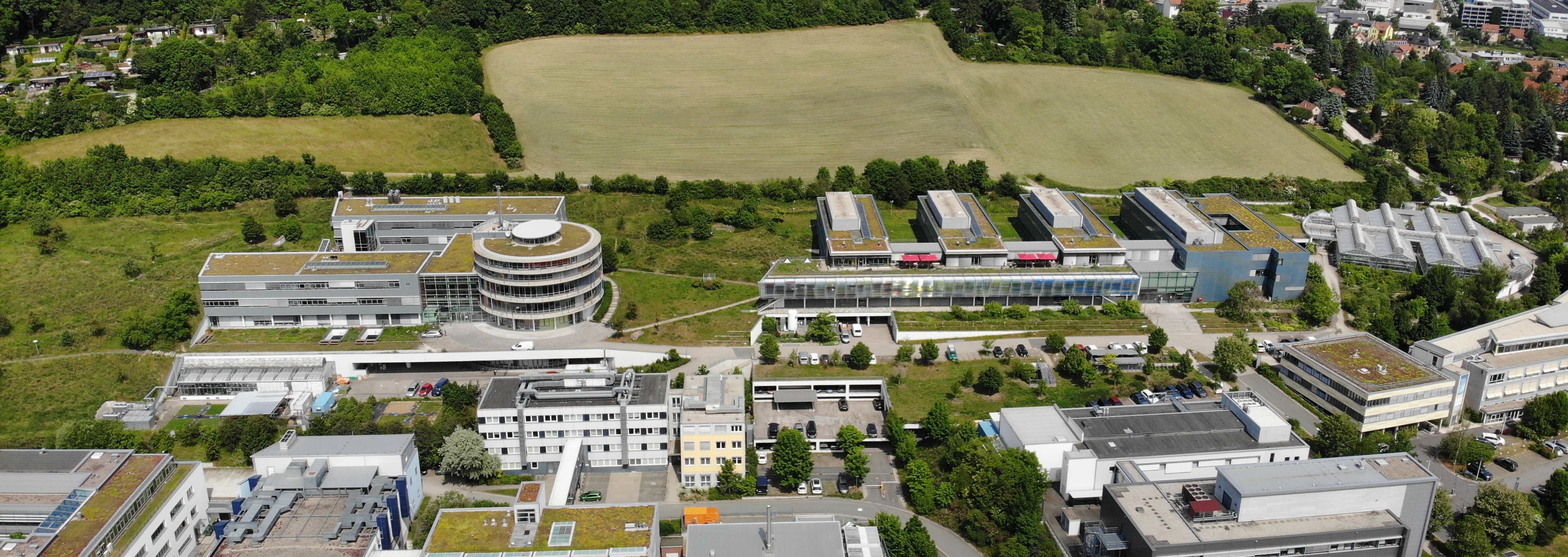Type
Lecture
Contact
Martin Jung and FLUXCOM Team
Place
BGC lecture hall, ground floor
Time
10.40 am – 11.00 am
Capacity
127
Language
English
Abstract
From local measurements to global understanding of the carbon and water cycle
The talk will take you on a journey that offers insights into our research into the carbon and water cycles of ecosystems. Our research uses a lot of measurement data. We will therefore start our journey at a station in the Hainich National Park, where the exchange of carbon dioxide and water between ecosystems and the atmosphere is recorded with the help of a large tower full of meteorological instruments. There are hundreds of such flux tower stations around the world, in a wide variety of locations from the Arctic to the tropics. But how can we learn about the carbon and water cycles of the entire biosphere from these individual stations? With satellite data and artificial intelligence! Satellites are observing the entire planet, providing valuable information about the state of ecosystems, some every hour, some every day, some every week, and over many years, even decades. We feed artificial intelligence with the time series of satellite data for the locations of the flux tower stations, along with station measurements of ecosystem carbon and water exchanges. The algorithm learns from the data and builds a model that can use the satellite data to calculate how much water and carbon dioxide the ecosystems are taking in from or releasing to the atmosphere. Using a large computer and advanced information processing technology, we apply the model to the global satellite data and get estimates of how much water and carbon dioxide ecosystems around the world exchange with the atmosphere. These data-driven results are valuable because they provide a complementary approach and perspective to theory-based models of the biosphere. Systematic comparisons of data- and theory-based results in relation to scientific questions allow us to draw conclusions about how robust our understanding of ecosystem processes and fluxes is, what uncertainties exist, and what aspects should be improved. At the end of our journey, we provide an illustrative and recent example of our work, where we were able to reconcile seemingly contradictory results from previous research. Are you curious? We hope to have aroused your interest and invite you to visit our information booth on this topic. Here you can talk and discuss directly with us, get more detailed information on aspects you are most interested in, or simply watch some animations of our results.
Von lokalen Messungen zu globalem Verständnis des Kohlenstoff- und Wasserkreislaufs
Der Vortrag nimmt euch mit auf eine Reise, die Einblicke in unsere Erforschung der Kohlenstoff- und Wasserkreisläufe von Ökosystemen bietet. Unsere Forschungsarbeit lebt von vielen Messdaten. Wir starten unsere Reise deshalb an einer Messstation im Nationalpark Hainich, an der mithilfe eines großen Turmes voller meteorologischer Instrumente der Austausch von Kohlendioxid und Wasser zwischen den Ökosystemen und der Atmosphäre erfasst wird. Es gibt hunderte solcher Messstationen auf der Erde, an verschiedensten Standorten von der Arktis bis zu den Tropen. Aber wie können wir von diesen einzelnen Stationen etwas über die Kohlenstoff- und Wasserkreisläufe der ganzen Biosphäre lernen? Mit Satellitendaten und künstlicher Intelligenz! Satelliten beobachten flächendeckend die ganze Erde und liefern wertvolle Informationen über den Zustand der Ökosysteme, manche jede Stunde, manche jeden Tag, manche jede Woche, und über viele Jahre, ja sogar Jahrzehnte hinweg. Wir füttern künstliche Intelligenz mit den Zeitreihen der Satellitendaten für die Orte der Messstationen, zusammen mit den Stationsmessungen vom Kohlenstoff- und Wasseraustausch der Ökosysteme. Der Algorithmus lernt von den Daten und erstellt ein Modell, das anhand der Satellitendaten berechnen kann, wie viel Wasser und Kohlendioxid die Ökosysteme aus der Atmosphäre aufnehmen oder an sie abgeben. Mithilfe eines großen Computers und moderner Informationsverarbeitungstechnologie wenden wir das Modell auf die flächendeckenden Satellitendaten an und erhalten Schätzungen, wie viel Wasser und Kohlendioxid die Ökosysteme weltweit mit der Atmosphäre austauschen. Diese datengetriebenen Ergebnisse sind wertvoll, da sie einen komplementären Ansatz und Blickwinkel zu theoriebasierten Modellen der Biosphäre liefern. Systematische Vergleiche von daten- und theoriebasierten Ergebnissen in Bezug auf wissenschaftliche Fragestellungen erlauben Rückschlüsse, wie robust unser Verständnis von Prozessen und Abläufen in den Ökosystemen ist, welche Unsicherheiten bestehen, und welche Aspekte verbessert werden sollten. Am Ziel unserer Reise erwartet euch ein anschauliches und aktuelles Beispiel unser Arbeit, bei dem wir mittels des beschriebenen Ansatzes scheinbar widersprüchliche Ergebnisse verschiedener Forscher miteinander in Einklang bringen konnten. Gespannt? Wir hoffen, euer Interesse geweckt zu haben, und laden euch herzlich ein, auch unseren Infostand zu diesem Thema zu besuchen. Hier könnt ihr direkt mit uns sprechen und diskutieren, nähere Informationen zu Aspekten bekommen, die euch am meisten interessieren, oder euch einfach ein paar Animationen unserer Ergebnisse ansehen.
